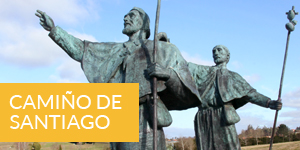- Accede I
- Regístrate I
- carrito
Patrimonio cultural
Santiago de Compostela fue declarada en 1985 Patrimonio Cultural de la Humanidad por la UNESCO:
‘Por ser un extraordinario conjunto de monumentos agrupados alrededor de la tumba de Santiago El Mayor, y destino de todas las rutas de la mayor peregrinación de la Cristiandad entre los siglos XI y XVIII, Santiago de Compostela es sin duda alguna uno de los más indiscutibles bienes patrimoniales de la Humanidad. (...) una ciudad ideal que desborda a la vez Historia e intemporalidad. (...)’
Pero Santiago de Compostela es también una Capital Europea de la Cultura, distinción que celebró en el año 2000 -junto a Avignon, Praga, Cracovia, Helsinki, Bruselas, Bergen, Boloña y Reykiavik- y que le fue concedida en reconocimiento a su dinamismo cultural y a su labor de difusión cultural a lo largo de la historia.
Ciudad Patrimonio de la Humanidad y meta del Camino de Santiago, además de Ciudad Europea de la Cultura, Santiago de Compostela es sin ninguna duda un destino privilegiado para el turismo cultural.
A estas razones hay que añadirle que es también capital de Galicia, país mágico en el que los romanos situaron el fin del mundo, y por ello el mejor exponente de una cultura única: la cultura gallega.












